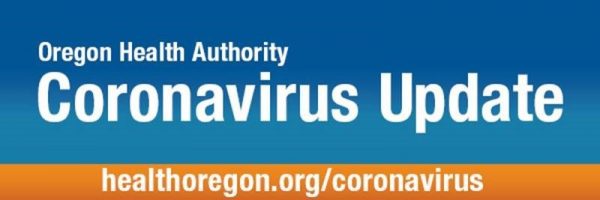The Oregon Health Authority is sharing a lot of new information from Governor Brown about how testing and contact tracing will play key roles in decision-making about when to start re-opening Oregon. We’re also including links to new guidance and strategy documents from the Oregon Health Authority that support the governor’s plans. As you can see, we’re going to be calling on Oregonians to continue to be a part of the public health response to COVID-19. Together, we can contain the spread of this virus and keep each other safe and healthy.
Governor Brown announces testing and contact tracing plans for re-opening Oregon
Governor Kate Brown introduced new plans for COVID-19 testing and contact tracing, two foundational elements of her framework for reopening Oregon safely. Ensuring adequate testing capacity and contact tracing will allow Oregon’s health care system to effectively identify and treat new cases of COVID-19, trace contacts with new cases to identify those at risk for infection, and contain new outbreaks before community spread can occur.
Key elements of the testing plan include:
– Voluntary, widespread testing in partnership with Oregon Health & Science University (OHSU).
– Unified coordination among all hospital labs to optimize Oregon’s available testing capacity, acting as one statewide system that will allocate resources to meet the state’s testing needs in every region.
– A focus on collecting data to serve at-risk communities.
Governor Brown’s contact tracing plan sets a goal of training at least 600 contact tracers, deployed statewide by county, with a focus on recruiting individuals with cultural and linguistic competence for the populations they serve.
More information about Oregon’s testing and contact tracing plans is available on the OHA website:
– Oregon’s plan to stop the spread of COVID-19.
– COVID-19 Strategic Testing Plan for Oregon.
#MyORHealth horizontal rule
Oregon updates testing guidelines so more people with COVID-19 symptoms can be tested
In recent weeks COVID-19 testing has increased to more than 9,000 tests per week in Oregon, with a cumulative total of more than 56,000 tests performed as of April 28. OHA estimates that 15,000 COVID-19 tests are needed statewide per week at this time.
Today the OHA changed its clinical testing guidelines for medical providers so more people with symptoms can be tested. OHA recommends that medical providers test for COVID-19 in people with symptoms consistent with COVID-19, with an added priority for testing people in higher risk groups. The testing guidelines also allow more testing for people without symptoms who live in or are employees, children, or other people in a care facility or group living setting.
The updated testing guidelines can be found on the OHA website.
OHSU and Governor Brown announce research study to inform plans to re-open Oregon
To better understand the prevalence and transmission patterns of COVID-19 across the state, Oregon Health & Science University, in collaboration with the State of Oregon and the OHSU-PSU School of Public Health, will conduct a statewide study to track, test and precisely map the virus in real time.
The study will enroll 100,000 randomly selected Oregonians to voluntarily provide essential data that can be used to inform decision making at the county, regional and state level. The study’s goal is to help get people back to school and work faster, while effectively managing the potential for future COVID-19 outbreaks.
To learn more about the study, see OHSU’s press release.
Are my pets at risk of getting COVID-19?
From what we know now, the risk of animals spreading COVID-19 to people is considered low. A small number of pets have been infected, mostly after close contact with people with COVID-19. Only a few of the animals reported to be positive had symptoms.
Until we learn more about how this virus affects animals, treat pets as you would other human family members to protect them from a possible infection.
Do not let pets interact with people or other animals outside the household.
Keep cats indoors when possible to prevent them from interacting with other animals or people.
Walk dogs on a leash, maintaining at least 6 feet (2 meters) from other people and animals.
It is likely that dogs and cats are dead-end host, which means they don’t continue to transmit onward.

Getting help to stay connected during COVID-19
We may have to remain apart physically, but staying connected with your family and friends by phone or online is especially important right now. The Oregon Lifeline program may be able to help make staying in touch more affordable.
If you qualify, you could get one of the following benefits of the program with a participating service provider in your area:
– Receive a discount on your phone bill of $10.75 per month.
– Receive a discount on your broadband bill of up to $12.75 per month.
– Receive free cell phone and data service.
Oregonians receiving benefits from select public assistance programs such as the Supplemental Nutrition Assistance Program (SNAP) or the Oregon Health Plan (OHP) may qualify. Residents may also qualify if their total household income is at or below 135 percent of federal poverty guidelines.
For more information or to request an application, call 800-848-4442, weekdays from 9 a.m. to 4 p.m., email puc.rspf@state.or.us or go to the Oregon Lifeline website.
Oregon reports 57 new COVID-19 cases, five new deaths
COVID-19 has claimed five more lives in Oregon, raising the state’s death toll to 109, the Oregon Health Authority reported on Saturday May 2nd.
Oregon Health Authority reported 57 new cases of COVID-19 on Saturday May 2nd, bringing the state total to 2,635. The new COVID-19 cases reported are in the following counties: Clackamas (2), Deschutes (2), Hood River (1), Jefferson (3), Lane (4), Malheur (2), Marion (15), Morrow (1), Multnomah (14), Umatilla (4), Washington (9).
Note: During routine data reconciliation, a case originally reported as a Polk County case was later determined not to be a case. It was subtracted from Friday’s state total, and the total number of cases in Polk County was reduced by one to reflect this change.
To see more case and county level data, please visit the Oregon Health Authority website, which OHA updates once a day: www.healthoregon.org/coronavirus.


